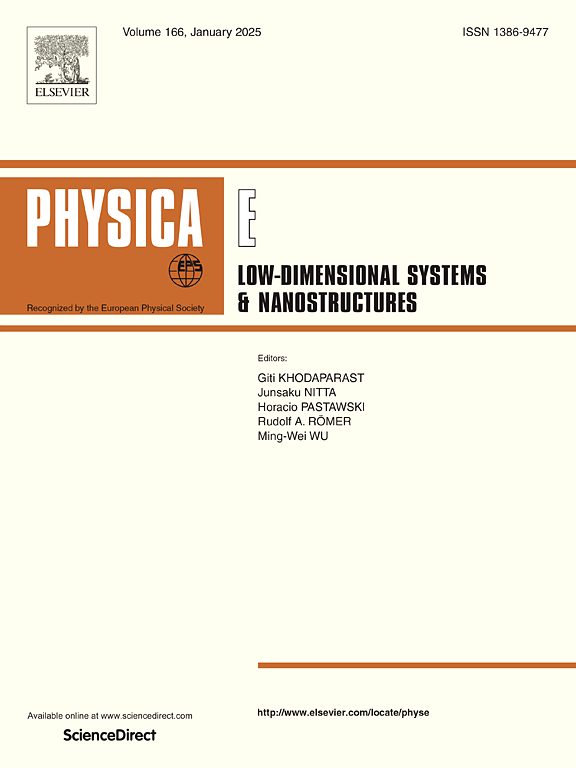Realization of the novel optical absorption device with broadened bandwidth based on the multi-layered doped nanofilm structures
IF 2.9
3区 物理与天体物理
Q3 NANOSCIENCE & NANOTECHNOLOGY
Physica E-low-dimensional Systems & Nanostructures
Pub Date : 2025-01-25
DOI:10.1016/j.physe.2025.116195
引用次数: 0
Abstract
The demand for optical absorption devices with high efficiency and wide bandwidth is rising. However, current methods like CPA and ENZ media with lossy dopants achieve perfect absorption only at specific frequencies or very narrow bands, limiting their broader use.Thus, broadening the operating bandwidth of high absorption is crucial for designing high-performance optical absorption devices. In this study, the relationship between the number of dopants and the resonant bandwidth of the doped ENZ medium structure was thoroughly analyzed. The results thus obtained show that the resonant bandwidth of the whole structure significantly widened as the number of dopants increased, thus expanding the bandwidth of high absorption of this structure. In addition, a multi-layer Ag/SiC nanofilm structure filled with dopants was used to design a light absorption device insensitive to the angle of incidence, achieving nearly 100 % absorption efficiency at a wavelength of 430 nm with a good working bandwidth.
求助全文
约1分钟内获得全文
求助全文
来源期刊
CiteScore
7.30
自引率
6.10%
发文量
356
审稿时长
65 days
期刊介绍:
Physica E: Low-dimensional systems and nanostructures contains papers and invited review articles on the fundamental and applied aspects of physics in low-dimensional electron systems, in semiconductor heterostructures, oxide interfaces, quantum wells and superlattices, quantum wires and dots, novel quantum states of matter such as topological insulators, and Weyl semimetals.
Both theoretical and experimental contributions are invited. Topics suitable for publication in this journal include spin related phenomena, optical and transport properties, many-body effects, integer and fractional quantum Hall effects, quantum spin Hall effect, single electron effects and devices, Majorana fermions, and other novel phenomena.
Keywords:
• topological insulators/superconductors, majorana fermions, Wyel semimetals;
• quantum and neuromorphic computing/quantum information physics and devices based on low dimensional systems;
• layered superconductivity, low dimensional systems with superconducting proximity effect;
• 2D materials such as transition metal dichalcogenides;
• oxide heterostructures including ZnO, SrTiO3 etc;
• carbon nanostructures (graphene, carbon nanotubes, diamond NV center, etc.)
• quantum wells and superlattices;
• quantum Hall effect, quantum spin Hall effect, quantum anomalous Hall effect;
• optical- and phonons-related phenomena;
• magnetic-semiconductor structures;
• charge/spin-, magnon-, skyrmion-, Cooper pair- and majorana fermion- transport and tunneling;
• ultra-fast nonlinear optical phenomena;
• novel devices and applications (such as high performance sensor, solar cell, etc);
• novel growth and fabrication techniques for nanostructures

 求助内容:
求助内容: 应助结果提醒方式:
应助结果提醒方式:


